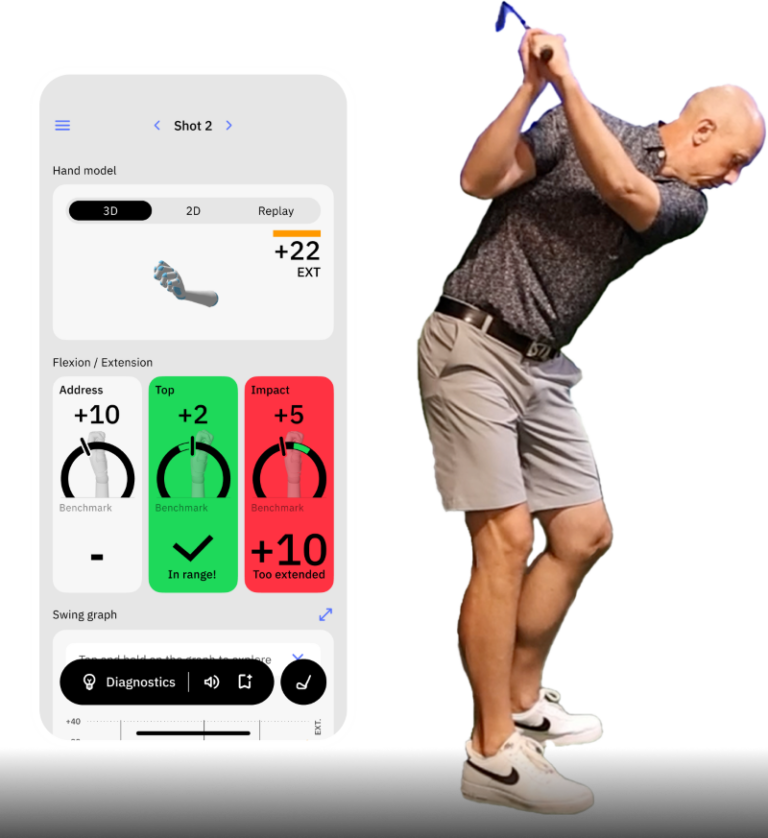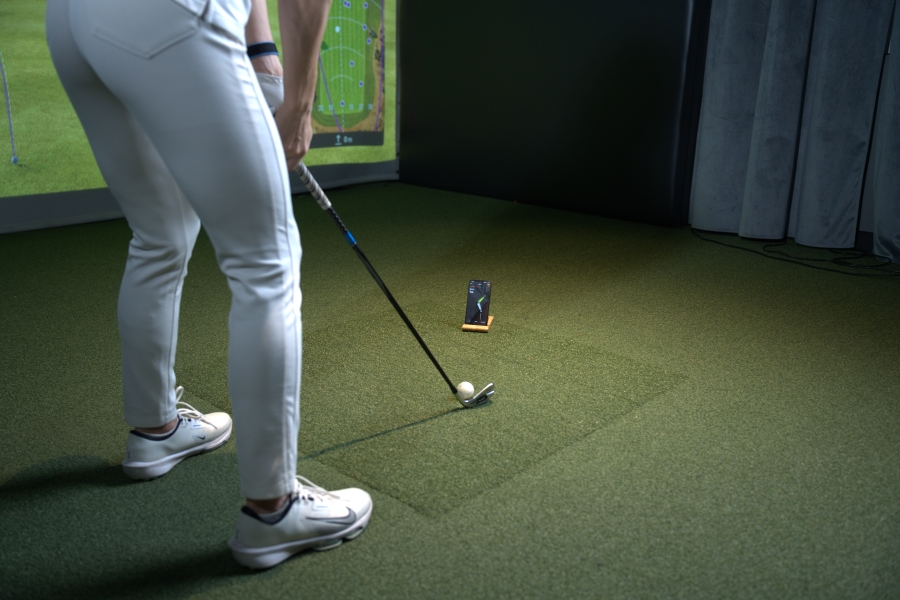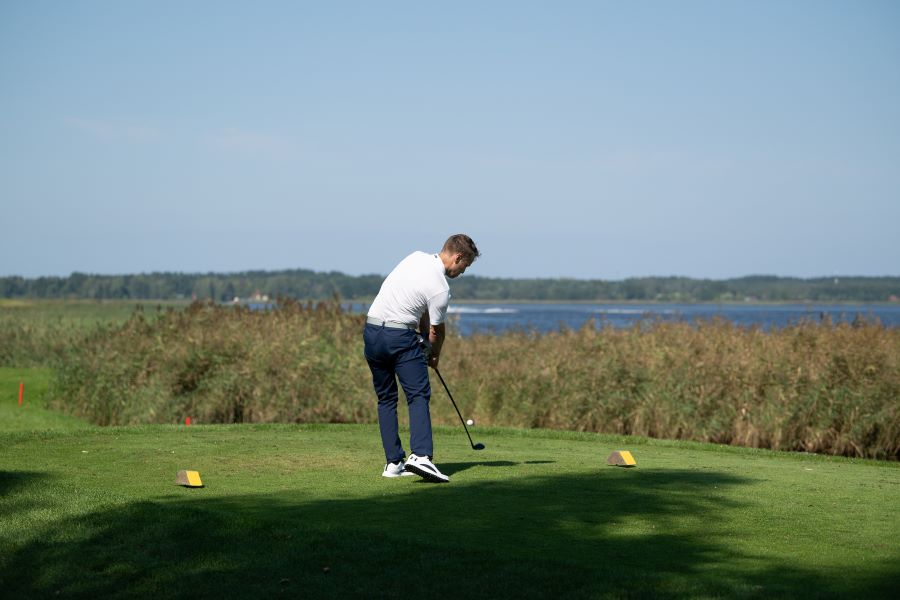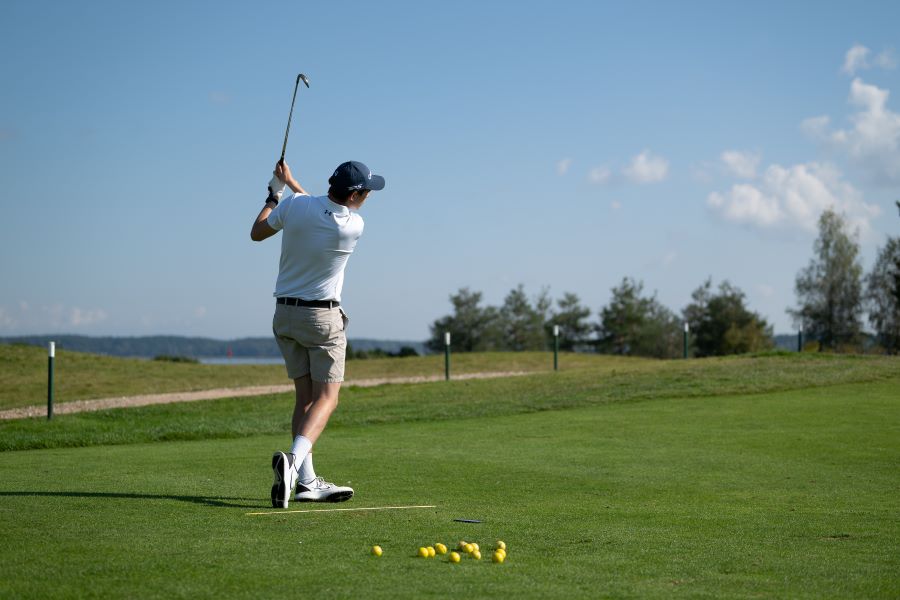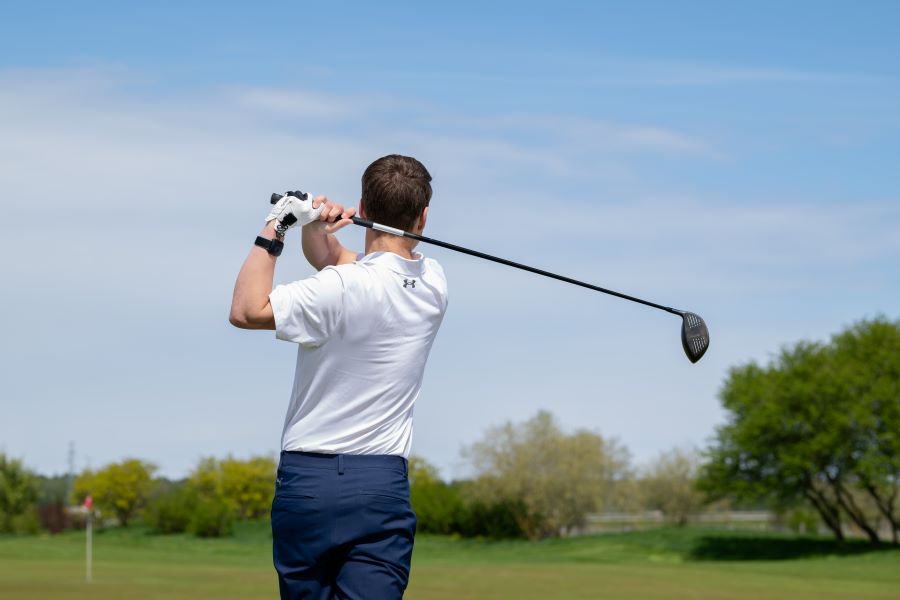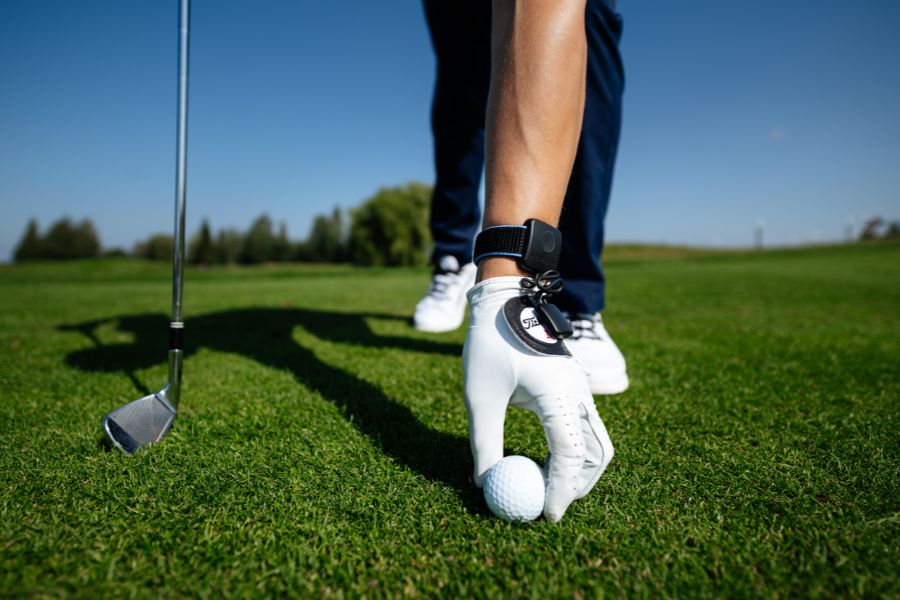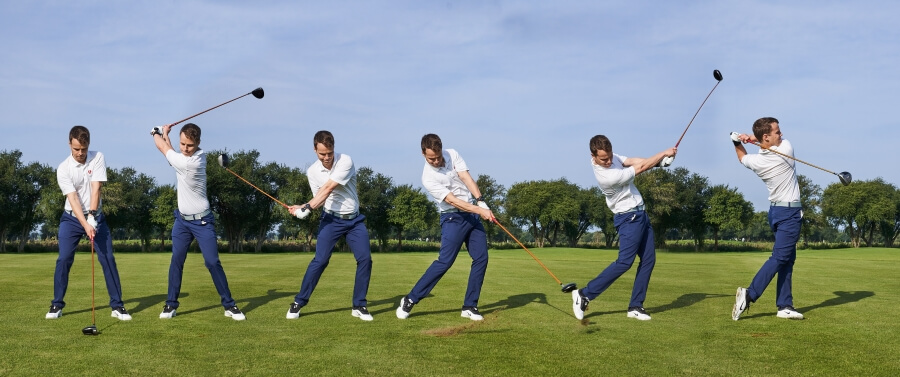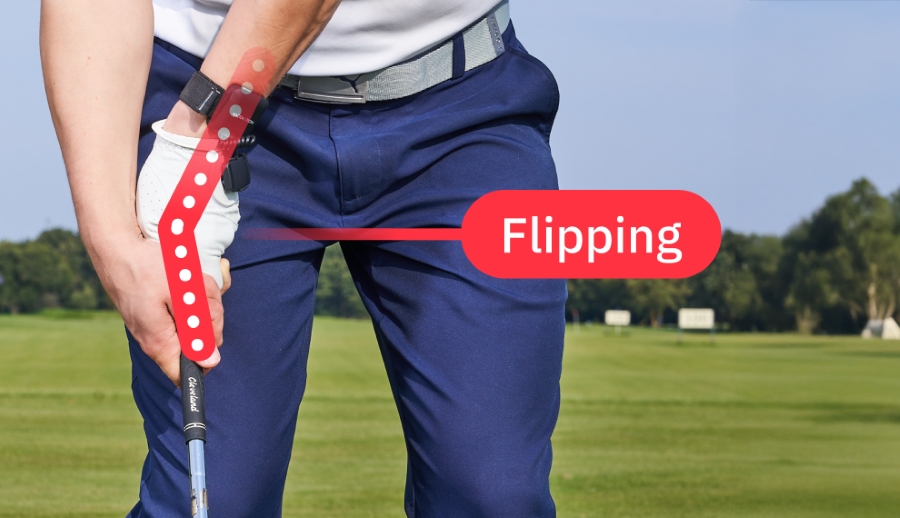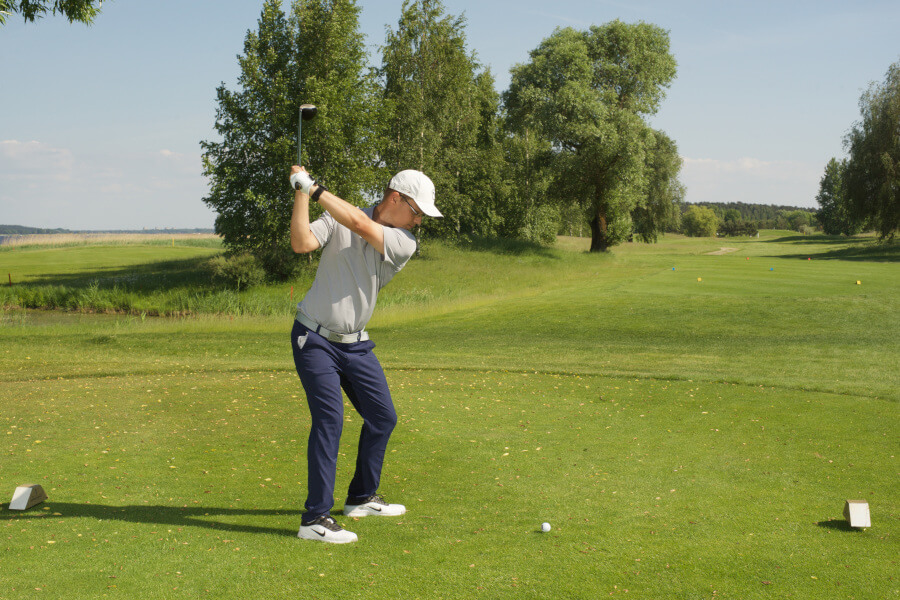How to Stop Swaying in Your Golf Swing: Actionable Tips & Proven Drills
Swaying in the golf swing causes shots that head right of the target, chunked shots, and even a lack of distance.
The funny thing about the sway is that most golfers do it to gain power.
In the end, they find out that this sway move that maybe felt powerful was actually something that took distance and accuracy away.
So, if you think you are swaying, here are some tips on how to stop and the best drills to fix the sway.
Stop Swaying in the Golf Swing (Key Takeaways)
If you don’t have time to read through this entire guide on swaying in the golf swing, here are some key points to take with you:
- Swaying causes shots like chunks, blocks to the right, and a significant loss of distance and power.
- Most of the time, the sway is caused by a lack of core stability, an overactive lower body, improper weight transfer, and poor wrist mechanics.
- The best way to deal with the sway is to practice drills that help you feel proper rotation as opposed to the sway motion. Drills like the jump drill, alignment stick exercises, and proper weight transfer techniques will eliminate the sway.
- Focus on building core strength and ensuring proper wrist positioning to maintain stability and control.
Contents
Why do Golfers Sway?
There are a few reasons why golfers sway in their swing and finding out what causes your sway can help you find a fix a little bit faster.
- Lack of core stability: if your core is weak, you may have excessive lateral movement because of the speed and torque in your swing.
- Overactive lower body: sliding the hips is sometimes done when golfers think they are rotating their lower body; in reality, the move is more of a side-to-side sway.
- Improper weight transfer: if your weight never transfers to the back leg, when you have to move forward and strike the ball, you may end up sliding.
- Poor Wrist Mechanics: when your lead wrist has too much extension, the clubface is open and weak; the swaying may happen as a way to create power and square the clubface through impact.
5 Ways to Fix Swaying in the Golf Swing
Now that we have the basic causes of the sway figured out, let’s look at how to fix them.
There are a few drills and tips to help you start really holding the hip in place and making that proper turn back.
Stabilize the Backswing with the Jump
We are starting with something that some golf professionals call the jump drill. We love this one because it helps you understand the feeling of a balanced and stable lower body.
This is pretty simple as you swing back you are going to want to have that feel that you can jump straight up.
This feeling is maintained throughout the swing. It’s a bit like you will have a spring in your step ready to go up if needed.
When you start to sway, your weight slides to the outsides of your feet and jumping is no longer an option. You’ll feel out of balance and like you lost your ability and power to jump.
Take a look at this video to see how to implement this top fix for the sway.
Strengthen Core Muscles
Spend some time in the gym strengthening your core muscles.
It is possible that your sway is caused by a lack of rotation because your core is not quite strong enough. Focus on stabilizing your core so you can feel this position and load in the backswing.
Some of the best exercises to practice are planks and rotational exercises using a weighted medicine ball.
These will improve your swing stability and help with everything from more distance to less swaying.
Use Alignment Sticks
There are a few great ways to use alignment sticks when trying to fix a sway movement in your golf swing.
One of the best is to put one on the outside of your trail hip. If you feel yourself bump into that alignment stick on the way back, you are swaying.
Another great option is to put an alignment stick down on the ground between your legs.
Visualize where your belt buckle is in relation to that alignment stick. When you swing back, your belt buckle will turn away from the stick.
If, instead, your turn back results in you seeing the belt buckle sliding along the stick without changing angles, you are swaying and not rotating.
Work on some half swings until you get this feeling down and can turn your sway into more of a rotation.
Focus on Proper Weight Transfer
When you transfer the weight correctly in your golf swing, swaying is much harder.
To do the weight transfer properly, you’ll cleanly move your weight to your trail leg and then to your lead leg.
One of the best drills for this is to put a ball under your trail foot as shown in the video below.
Keep it on the side of your foot, the outer side near your pinky toes. As you swing back you’ll focus on feeling weight transfer to the inside part of your foot.
If you sway your foot will roll right over the ball.
You can even hit some half-swing shots like this until you feel that proper transfer of weight from the back foot to the front foot. This type of movement creates a better rotation and a more stable golf swing.
Correct Wrist Mechanics
Interestingly, proper wrist mechanics can also help you to stop swaying in golf. One reason that golfers sway through the golf ball is because their wrists and hands are in the wrong position.
They sway to give themselves a little more time to square the clubface and hit with the lead wrist in a flexed position.
Use the HackMotion wrist sensor to see if your wrist is too extended at the top of your backswing. If this position is wrong, work on adding flexion until you at least get to a flat lead wrist position at the top.
This will, in turn, help you fire through the golf ball by rotating and transferring weight instead of feeling like you have to slow down, slide, and sway your way through the golf ball just to square the face.
Best Drills to Stop Swaying in Golf Swing
The way to fix swaying in the golf swing is through drills. It’s something you have to feel.
If you have noticed, each of our five ways to fix swaying in golf revolves around some type of drill to help you feel the proper motion.
Here are a few others you can work on.
Hip Bump Drill
For the hip bump drill, you will place an alignment stick near your lead hip and practice bumping your hip forward slightly while keeping your upper body stable.
You’ll then be able to get the proper hip rotation and clear the alignment stick on both sides of the ball. This process reduces swaying and creates awareness of your hips in the swing.
Wind Up Drill
This wind up drill is a backswing drill that helps you feel how to wind up and load your trail side.
If you are struggling with what creates power and how to wind up the backswing, this drill should help.
Chair Drill
Finally, here, you will see Eric Cogorno do a drill where he actually puts a lawn chair on the side of his trail hip.
This chair helps give him an idea of how his hip is moving, and he can turn around the chair instead of swaying and bumping into it.
FAQs
What does swaying in the golf swing cause?
Swaying the golf swing causes inconsistency at impact. This leads to fat or thin shots. Swaying can also lead to a loss of power and a slice ball flight.
Is swaying off the ball really so bad?
Swaying off the ball is not the most powerful move in golf. If you time it correctly, you may have some success, but you will lack consistency in your golf game. The best motion is more of a rotation in the backswing to impact and then to the lead foot.
Does swaying cause you to lose distance?
Swaying can cause you to lose distance. Some of the energy you try to transfer to the ball gets lost as your lower body is not timed correctly. In addition, the sway can sometimes leave you with an open clubface, resulting in less distance.
Conclusion
Most of the time, your swaying issue is caused by inefficiency in the lower body.
However, using your HackMotion wrist sensor will let you know if your wrist is in the correct position, allowing you to maintain your swing without the need to sway or slow down.
Once you get the feeling of rotation instead of swaying, you’ll see big changes in your game.
